3DO
Top 10 Best 3DO Games of All Time!
The 3DO Interactive Multiplayer was conceived by Trip Hawkins (the founder of Electronic Arts) as a next-generation CD-based console that would be manufactured by various companies. The first models were released by Panasonic in 1993, and Sanyo and Goldstar (LG) followed up with their own versions the next year. The console was heavily promoted, but upcoming consoles from Sega and Sony stole most of the hype. The 3DO’s hefty $700 price tag put it out of reach from most consumers, but low royalty rates provided third-parties an incentive to support the system. Major Japanese publishers like Capcom and Konami released games for the platform to test the waters, and Electronic Arts put their full support behind the 3DO by pledging 20 games. Its library was saturated with low budget FMV-centric interactive movies, but the 3DO was still home to a number of memorable games despite its short lifespan.
10
Gex
1994
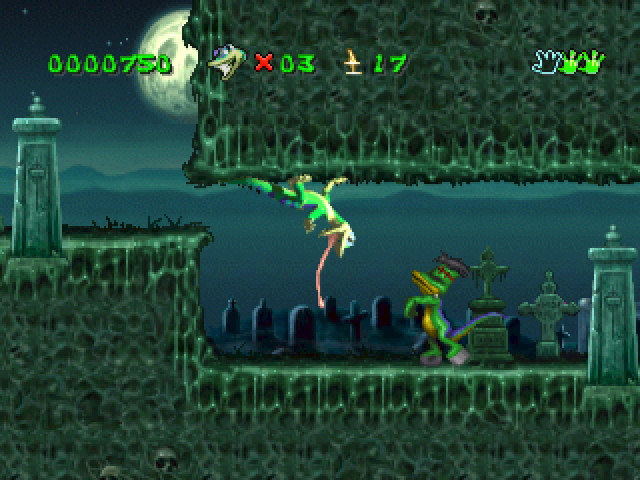
Side-scrolling platform games starring obnoxious animal mascots were all the rage in the mid ’90s. In most cases, this was the result of video game companies attempting to cash in on the success of Sonic the Hedgehog. Gex the Gecko is no exception. The character seems like he was born in a marketing meeting or created by a focus group. Gex wears shades, he has a penchant for graffiti, and his entire personality is defined by a constant string of witty one-liners (voiced by comedian, Dana Gould.) Overlooking his “attitude” for a moment, Gex actually has a lot of interesting abilities at his disposal that make him well-suited for a platformer. He can climb on walls and ceilings, he can bounce around on his tail, and his tongue can be used to retrieve items. Since the game’s stages are designed around Gex’s abilities, a lot variety can be seen in the level designs. Gex will travel through graveyards, jungles, cartoons, and kung-fu themed areas. Gex didn’t light the world on fire in the same manner that Sonic the Hedgehog did, but it stands out as the best platformer on the console and helped fill a void in the 3DO’s library.
9
The Need for Speed
1994
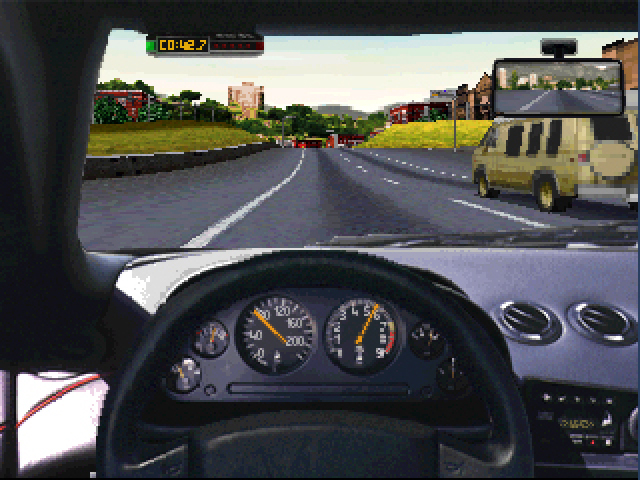
While more recent entries in the series have been based around action-packed, arcade-style gameplay, the first Need for Speed game was intended to be simulation with realistic handling and physics. Electronic Arts teamed with automotive magazine, “Road & Track” in an effort to ensure the vehicles in the game would look and handle like their real-life counterparts. They even took care to make sure the vehicles in the game sounded like they did in real life. Comprehensive records, detailed vehicle specifications, and a handy replay feature helped the game stand out even more. With only nine cars to choose from, The Need For Speed can’t compare with modern racers like Gran Turismo or Forza, but the attention to detail was impressive for the era. The game even included cockpit views for each vehicles – a feature that was noticeably absent in the first four Gran Turismo titles. For gamers who wanted to drive exotic sports cars in exotic locations, The Need For Speed was the next best option available in 1994.
8
Policenauts
1995
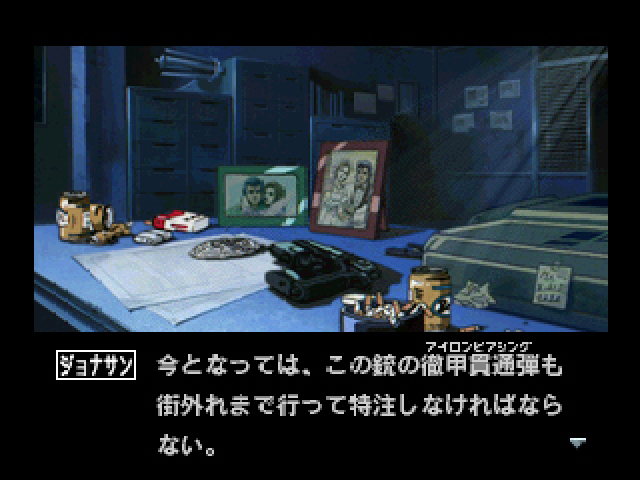
Policenauts is a graphic adventure game and the spiritual sequel to Snatcher. Like Snatcher before it, Policenauts feels more like an interactive comic book than a traditional video game. The game implements a simple “point and click” interface that allows players to examine their surroundings, analyze objects, and interact with other characters. The game also features occasional shooting segments in which players have to defend themselves from hostile enemies. The game is perfectly playable with a standard controller, but the option to use a mouse is greatly appreciated. Although the gameplay in Policenauts is similar to its predecessor, the storyline and characters are completely different. Snatcher was an elaborate cyberpunk detective story, whereas Policenauts comes across as a typical buddy cop movie with some sci-fi elements thrown in for good measure. (Think “Lethal Weapon in space.”) The story doesn’t have the same level of mystery or suspense as Snatcher, but it’s more lighthearted and humorous. Policenauts was originally released on the PC-9821 home computer in 1994 before it was ported to the 3DO the following year. The 3DO featured redrawn graphics and animated cutscenes, but the fact that it even exists in the first place is quite surprising when you consider how small the console’s userbase was. Unfortunately, the game was released exclusively in Japan, so 3DO owners will either need a translation guide or an understanding of the Japanese language in order to fully enjoy the game.
7
Road Rash
1994
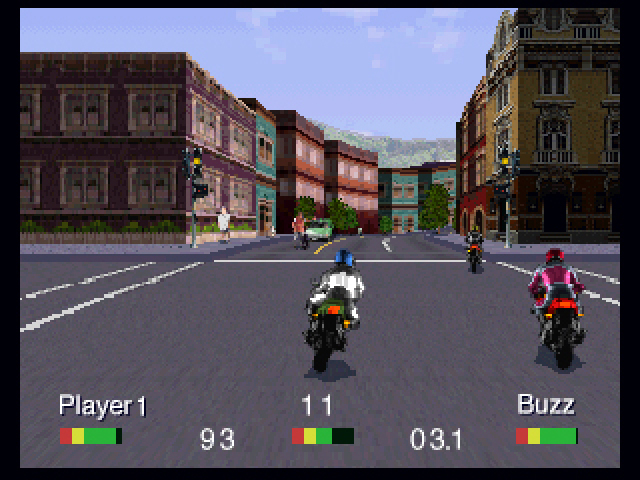
In many ways, Road Rash was the perfect game to showcase what the 3DO was all about. It featured polygonal graphics that highlighted the raw power of the console, the soundtrack included licensed music from bands like Soundgarden and illustrated the benefits of the CD medium, and the use of full-motion video sequences helped the console stand out from popular 16-bit systems of the era. Earlier versions of Road Rash had been released on the Genesis and Sega CD, but the 3DO version left them in the dust. The basic premise of Road Rash revolves around violent (and highly illegal) motorcycle races. Road Rash is an action game at its core, but the physics were remarkably sophisticated for the era. (For instance, hills and banked corners actually had a noticeable affect on how the bikes handle.) Instead of merely beating their opponents to the finish line, players are encouraged to knock their rivals off their bikes by any means necessary. If punching and kicking opponents off their bikes isn’t violent enough, players can use an assortment of weapons ranging from crowbars to cattle prods. Players will have to be mindful of police officers as well, so it’s not exactly a free-for-all. Road Rash was one of the first killer apps on the 3DO, and it’s just unfortunate the game didn’t launch alongside the console.
6
Out of This World
1994
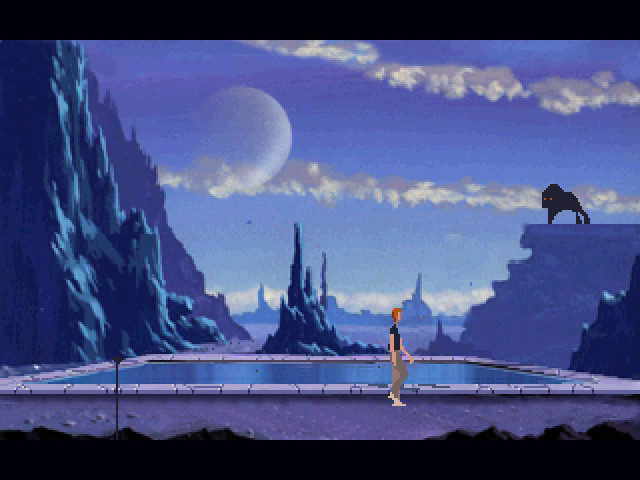
No pun intended, but this game is out of this world! (Actually, the pun was completely intentional. In fact, the phrase “no pun intended” was specifically used to make the pun even more obvious.) Out of This World is a cinematic platformer that’s well-known for impressive animation, environmental puzzles, and “trial and error” play mechanics. The setting and overall atmosphere is remarkable, and the game manages to tell a compelling story without having to rely on dialogue. Instead of using text or voice to guide players, Out of This World lets the environments speak for themselves. The game was originally released for the Amiga in 1991, but the 3DO port featured a few notable enhancements. For example, the backgrounds in the 3DO version were considerably more detailed than they were in earlier versions. An argument can be made that the new backgrounds conflict with the minimalistic art style, but they are breathtaking nonetheless. The influence of Out of This World could clearly be seen in games like Flashback and Blackthorne, and it has also been cited as an inspiration for more-recent titles like ICO.
5
Cannon Fodder
1994
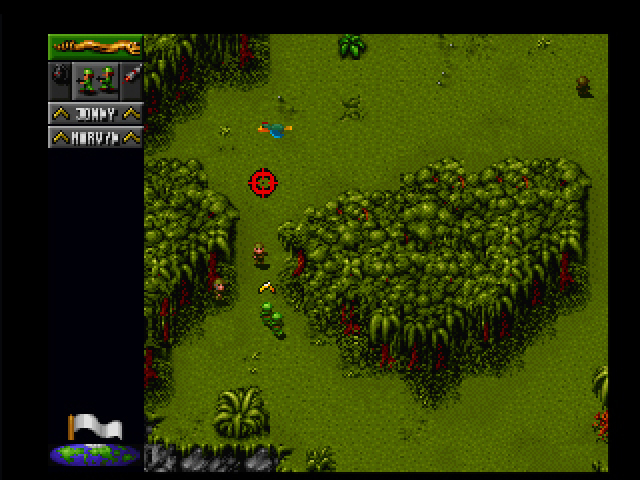
In Cannon Fodder, players are put in charge of a small group of soldiers and are assigned various tasks that typically involve killing enemies, destroying buildings, and rescuing hostages. With its overhead view, tiny sprites, and military themes, one might mistake Cannon Fodder for a real-time strategy game in the vein of Command and Conquer. Despite the obvious similarities, Cannon Fodder could better be described as a “point-and-click action game.” This is not to say that strategy doesn’t play a role, however. During the game, players will use various landmarks for cover, lure enemies into traps, and avoid environmental hazards. Cannon Fodder is extremely easy to jump into, and players are unlikely to get bogged down by micro-management. Cannon Fodder is also a lot more carefree than its premise suggests, and the game is well-known for its dark sense of humor and a strong sense of irony. If there’s one drawback to the 3DO version of Cannon Fodder, it’s the control options (or lack thereof.) The standard 3DO controller works well with the game, but the game could have been even better if it supported the 3DO mouse. Nevertheless, Cannon Fodder still shines.
4
Star Control II
1993
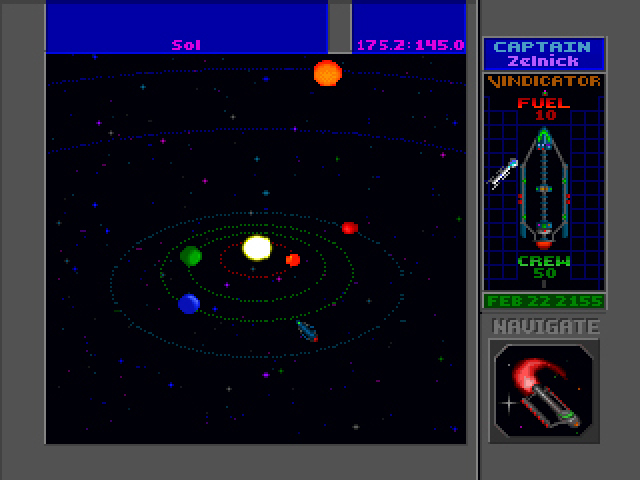
Star Control II is one of the best sequels ever. The game took the simplistic, strategy-based missions of its predecessor and built a massive, story-driven adventure game around them. In order to progress through the game, players must interact with various alien races in an effort to resolve conflicts, achieve diplomacy, and unravel inter-stellar mysteries. There are dozens of alien races and literally hours of dialogue in the game, and each species has their own unique conversational traits. Players are given a few subtle clues to point them in the right direction, but the story is ultimately pieced together through exploration and conversation. By exploring various planets, players can gather valuable resources, upgrade their ship, and eventually widen the area of space that they can safely travel to. Star Control II can be somewhat overwhelming, as players are basically free to explore the game as they see fit. This sense of exploration drives the plot forward, however, and defines the entire game in many regards.
3
Return Fire
1995
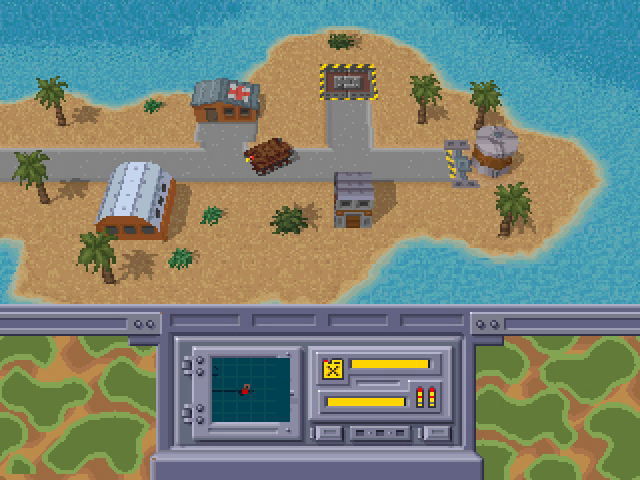
Return Fire is a military-themed action game that’s played from an overhead view. The goal in each stage is to break through enemy lines, capture the enemy flag, and return with it to their base. There are four different vehicles that can be used to infiltrate enemy territory. Helicopters can fly over all kinds of terrain and are well suited for recon missions; armored support vehicles have impressive firepower and can take out enemy targets from safe distances; tanks can rotate their turrets 360º and fire even when moving away from a target; and the jeep is the fastest and most maneuverable ground vehicle in the game. The missions will challenge players in various ways, but Return Fire is most fun when played with a friend. Its vertical split-screen mode is reminiscent of Herzog Zwei on the Genesis, and the game is every bit as addictive. The play mechanics in Return Fire don’t exactly break new ground, but the production values are impressive. The game’s scaling camera provides a great sense of depth, the soundtrack hearkens back to classic war movies, and the historical video clips bring a sense of realism to the game. Return Fire is overflowing with military propaganda, but the game itself is a frivolous and highly entertaining affair.
2
Samurai Shodown
1995
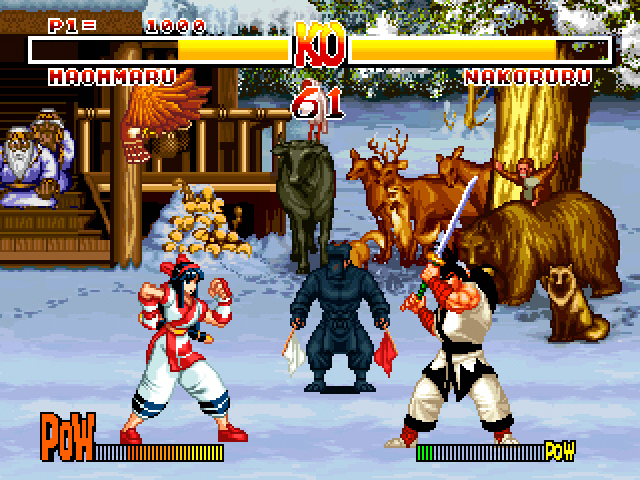
Samurai Shodown is one of the most interesting 2D fighting games ever made. Many fighting games from the era were centered around flashy combos and frenetic button mashing, but Samurai Shodown relied more heavily on timing and patience. One well-timed attack could eliminate more than half of your opponent’s energy, but the recovery times for powerful strikes were also a lot longer than what was typically seen in the genre. This ultimately created a tense atmosphere and forced players to react to their opponents rather than simply attacking mindlessly. Versions of Samurai Shodown were released on the Super NES, Genesis, and Sega CD, but the 3DO was much more faithful to the Neo Geo original. Unlike its 16-bit counterparts, the 3DO version of Samurai Shodown incorporated sprite scaling and implemented a dynamic, “zoomed out” camera system for when the characters got further away from each other. The 3DO port also retained all of the gore from the original. Occasional framerate issues, load times, and downgraded sound samples prevent the 3DO version from being a perfect port, however. You can’t really complain, considering that the Neo Geo version cost four times as much as the 3DO port. I only wish the game supported a six-button controller.
1
Super Street Fighter II Turbo
1994
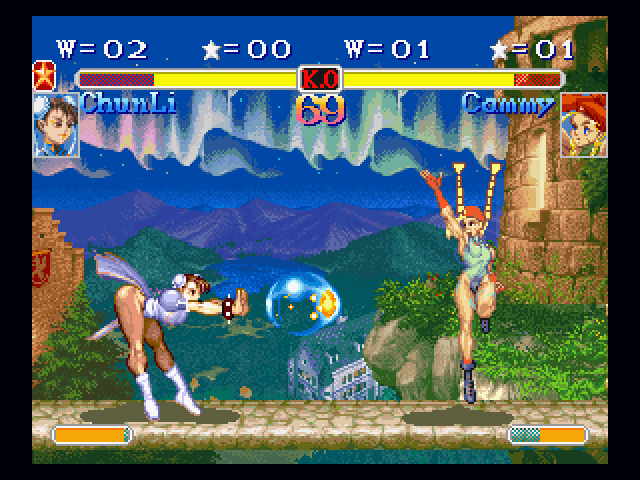
Super Street Fighter II Turbo was the last major iteration of the most important fighting game of all time. Street Fighter II basically kick started the fighting game craze of the 1990s. The diverse roster of characters, gesture-based special moves, and combo-centric gameplay helped set the bar for every fighting game that followed. Capcom rode the wave of success for as long as they could, and several upgraded versions of Street Fighter II were developed. Champion Edition added four more characters to the roster, Hyper Fighting increased the speed, and Super Street Fighter II included even more characters and was accompanied by a visual upgrade. Super Street Fighter II Turbo, for its part, featured more animations and speed settings, and marked the first appearance of a hidden character in the series. The “Super Combo” concept was also introduced in the game, and a stronger emphasis was placed on “Air Combos.” The 3DO version of Super Street Fighter II Turbo was remarkably faithful to the original arcade game. The graphics were superior to the already-stellar 16-bit versions, and nearly all of the original animations were included. (It’s highly recommended that you pick up a six-button controller, however, as the layout on the standard 3DO controller isn’t appropriate for the game.) All things considered, the 3DO version of Super Street Fighter II Turbo was about as close to “arcade perfect” as anyone could have hoped for. Subsequent versions of the game were eventually released on the Saturn and PlayStation, but the 3DO version stood out thanks to an arranged soundtrack that featured jazzy remixes of the original tunes. Super Street Fighter II Turbo is the single greatest game to ever grace the 3DO.

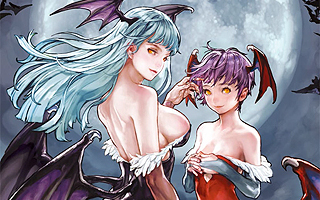
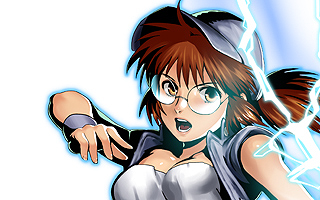

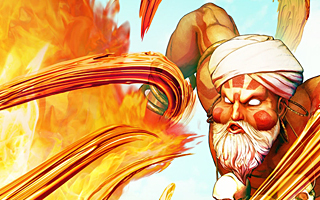
Do you agree with this list? Let us know what you think by leaving a comment below. Your opinion matters!